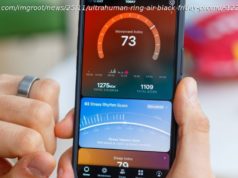The Samsung Galaxy A8+ and the OnePlus 5T cost almost the same. But while the OnePlus 5T is a beast, the Galaxy A8+ is a beauty to behold.
The Samsung Galaxy A8+ and the OnePlus 5T cost almost the same. They aspire to offer more or less the same deal as well. But while the OnePlus 5T is a beast, the Galaxy A8+ is a beauty to behold. Clearly, the Galaxy A8+ and the OnePlus 5T have been designed for two very different target audiences
The Samsung Galaxy A8+ and the OnePlus 5T cost almost the same. They aspire to offer more or less the same deal as well. But while the OnePlus 5T is a beast, the Galaxy A8+ is a beauty to behold. Clearly, the Galaxy A8+ and the OnePlus 5T have been designed for two very different target audiences even though they may share the same goal. While the Galaxy A8+ has been designed for those looking for good-looking phone, the OnePlus 5T is meant for those who prefer raw fire-power over gorgeous looks.
Here’s a point by point breakdown of both the phones, something that I hope will help you make an informed choice:
The Galaxy A8+ looks a lot like the Galaxy Note 8 which means that it is premium to the T, both in terms of looks as well as in terms of feel. It’s carved out of glass — an unspecified version of Corning Gorilla Glass — and has a mid-frame that’s all-metal, just like the Galaxy Note 8. It’s near bezel-less too, the Galaxy A8+, which means that it’s also a long continuous sheet of glass — on the front — sans any physical buttons. It’s a 6-inch phone but because Samsung has shaved off much of the bezels, the Galaxy A8+ feels smaller in the hands. Also, it offers a screen-to-body ratio of close to 75 per cent.
The Galaxy A8+ isn’t as dangerously curvaceous as the Galaxy Note 8 though. It’s not as bezel-less even. This entails in a phone that’s better suited to take everyday wear and tear with ease than either of its flagship siblings. It’s IP68-certfied for water and dust resistance, as well, if you’re someone who takes paper specs way too seriously. Clearly, the Galaxy A8+ is a phone designed from ground up for the masses that’ll pick durability over aesthetics. That the Galaxy A8+ offers both in equal measure is just an icing on the cake.
Having said that, the Galaxy A8+, also has a couple of tricks up its sleeve that would make you want to pick it up over a Galaxy Note 8. A) The fingerprint scanner in the case of the Galaxy A8+ rests below the camera module making it far more convenient and accessible B) There is no dedicated Bixby button on-board the Galaxy A8+. The Galaxy A8+, in addition, has its speaker out on the right edge — and not at the bottom where it’s more likely to affect your gaming/movie experience — and it comes with dedicated slots for two SIM cards and one micro-SD.
Elsewhere, the Galaxy A8+ has its power button on the right while the volume rocker lies on the left. The phone uses USB Type-C port for charging and data syncing and includes a 3.5mm audio jack at the bottom.
ALSO READ: Samsung Galaxy A8+ review: Bringing infinite possibilities to the masses
The OnePlus 5T is also an edge-to-edge or bezel-less phone, which means much like the Samsung Galaxy A8+, OnePlus’ phone also has an unusually tall screen and an unusual aspect ratio of 18:9 and a screen-to-body ratio of over 80 per cent. The OnePlus 5T is a 6.01-inch phone, but because OnePlus has shaved off much of the top and bottom bezels as well as the bezels on the sides, the phone occupies a smaller footprint. It feels smaller in the hands.
If I was to compare it head-to-head for you, the OnePlus 5T occupies a much smaller footprint, as compared to the Samsung Galaxy A8+ even though it’s supposed to be bigger going by its paper specs. This is because, as opposed to the Galaxy A8+, the OnePlus 5T offers more screen-to-body ratio which means that, as opposed to the Galaxy A8+, the OnePlus 5T offers far less bezels. The OnePlus 5T is lighter too. Also, it is thinner, in comparison. The Samsung Galaxy A8+ can be big and unwieldy for some, especially for people with smaller hands. But then the OnePlus 5T is a stone-cold slab of metal that’s slippery to the touch, and needs some careful handling. So you win some, and you lose some.
Elsewhere, the OnePlus 5T comes with an Alert Slider (on the left) which is basically a quick notification toggle (all, priority, and none) to quickly sort your app notifications. It comes with a USB Type-C port for charging and data-syncing purposes, a bottom-facing speaker out, a 3.5mm audio jack and dual-SIM (nano SIM) support.
Winner: The Samsung Galaxy A8+ looks gorgeous, and is IP68 certified for water and dust resistance
The OnePlus 5T comes with a 6.01-inch full-HD+ optic AMOLED display with a 1080 x 2160 pixel resolution and 401 ppi. The optic AMOLED screen of the OnePlus 5T further support both sRGB and DCI-P3 wide colour gamut, as also something called as Sunlight display: a built-in software algorithm that adapts automatically to harsh light to facilitate a great viewing experience.
The screen resolution of the OnePlus 5T, may seem like lacking, but, it’s actually quite good. This is because OnePlus is using a Samsung-built optic AMOLED display on the OnePlus 5T — with Corning Gorilla Glass 5 on top — and gives you as many as four different colour modes, including DCI-P3, to tinker about. Only you don’t need to. The OnePlus 5T, at its default screen setting, pops out like the best in the industry and has viewing angles to match them, if not outright beat them. The reading mode on-board the OnePlus 5T when enabled, meanwhile, makes the phone mimic a Kindle e-reader which is fantastic for people who love to read a lot on their mobile devices.
The Samsung Galaxy A8+ comes with a 6-inch full-HD+ Super AMOLED display with a 1080 x 2220 pixel resolution and 411 ppi. Samsung is using its proprietary Super AMOLED panel, which metes out rich and vibrant colours — not as pixel-popping as say the OnePlus 5T but more toned down, neutral and pleasing to the eyes — and viewing angles are also quite good. Brightness levels are quite good too.
The Galaxy A8+, although it doesn’t offer the flexibility to change screen resolution to conserve battery life like its high-profile siblings, it gives you as many as four screen modes to correct colour temperature, as well as a blue light filter for comfortable night-time reading. The Galaxy A8+ gets Samsung’s proprietary always-on display as well, so you can get customizable notifications directly on the screen — alongside a widget that shows date and time — without having you to power it up.
Winner: The Samsung Galaxy A8+ offers a more pleasing and true-to-life display, and its hallmark always-on display adds a third dimension to it.
The Galaxy A8+ is powered by a 2.2GHz octa-core Exynos 7885 processor clubbed with Mali-G71 GPU and 6GB of RAM. It comes with 64GB of internal storage which is expandable by up to 256GB via a dedicated micro-SD card slot. The Exynos 7885 is a brand new chipset, but, it’s a little strange that Samsung isn’t publicizing it the way it publicizes its other chipsets. There’s not even a dedicated page for it yet. Even though it has all the bells and whistles, of a good mid-tier chipset. All we know is that it packs in two performance-oriented Cortex-A73 cores and six efficiency-oriented Cortex-A53 cores, as opposed to its predecessor Exynos 7880 — that packed in eight Cortex-A53 cores — powering the Galaxy A7 2017.
Samsung’s Exynos 7885 processor when coupled with its Experience user interface — which is based on Android 7.1.1 Nougat — ensures the Galaxy A8+ has almost no trouble dealing with tasks, both basic as well as hard-grinding. It’s prone to the occasional lag or two, from time to time, but nothing like Samsung’s TouchWiz days. Clearly, Samsung has come a long way, as far as toning down and optimising the software is concerned, but whether or not the Galaxy A8+ is able to hold on to it after a period of say 6 months to a year is yet to be seen.
But then the OnePlus 5T is a beast, is what it is. It’s powered by a 2.45GHz octa-core Qualcomm Snapdragon 835 processor clubbed with Adreno 540 GPU. It’s available in two RAM and storage options: 6GB RAM/64GB storage and 8GB RAM/128GB storage. That’s as high-end as high-end can be, even more so in its mid-tier segment. When coupled with OnePlus’ bloat-free OxygenOS — which is based on Android 7.1.1 Nougat — the OnePlus 5T is a beast, is what it is. It’s a pocket rocket that breezes through every task you throw at it, both basic and hard grinding, and it does this running cool as a cucumber. But if I was to compare it specifically with the Galaxy A8+, well, the OnePlus phone hits the Samsung phone straight out of the ball park in terms of all-round performance.






